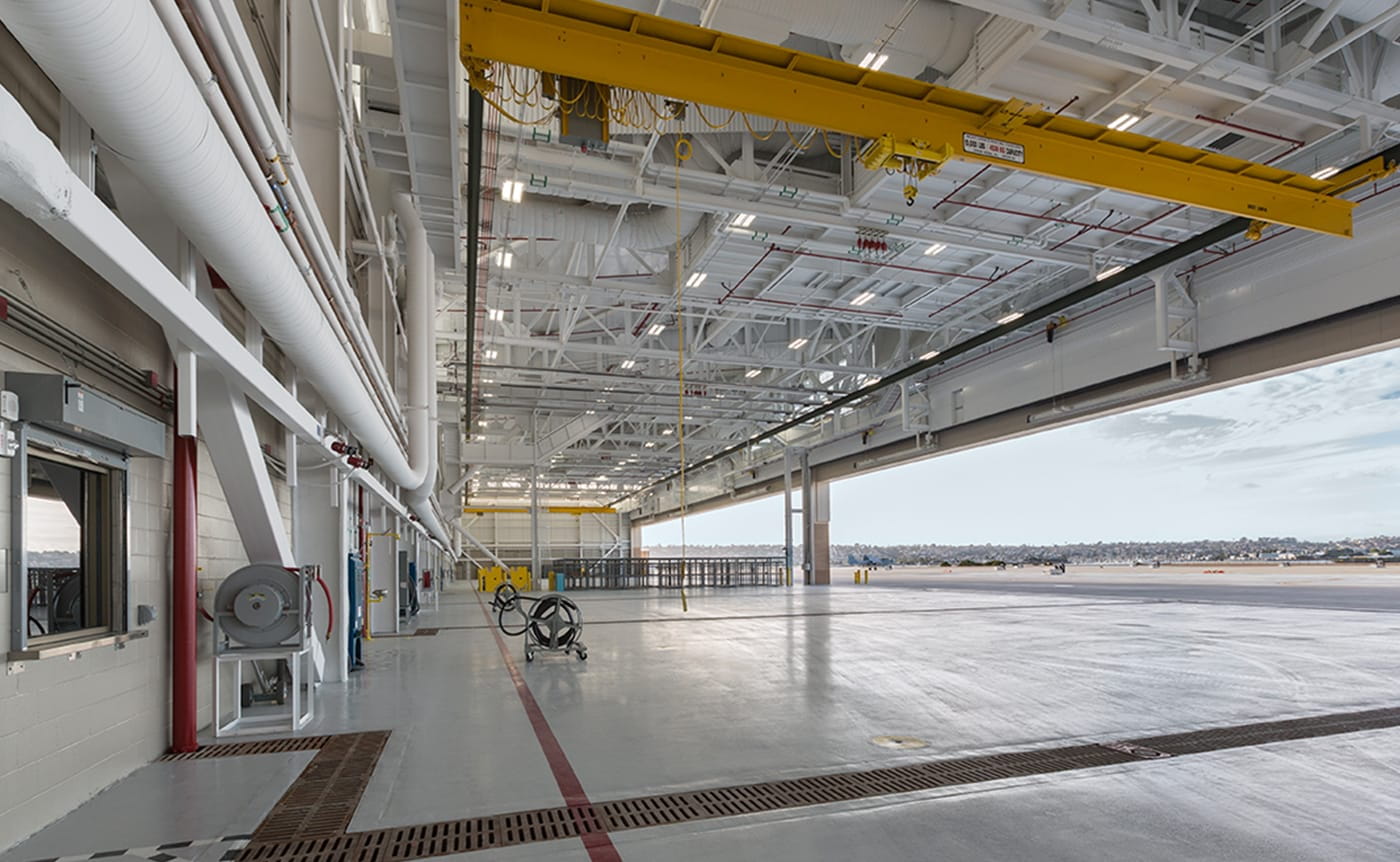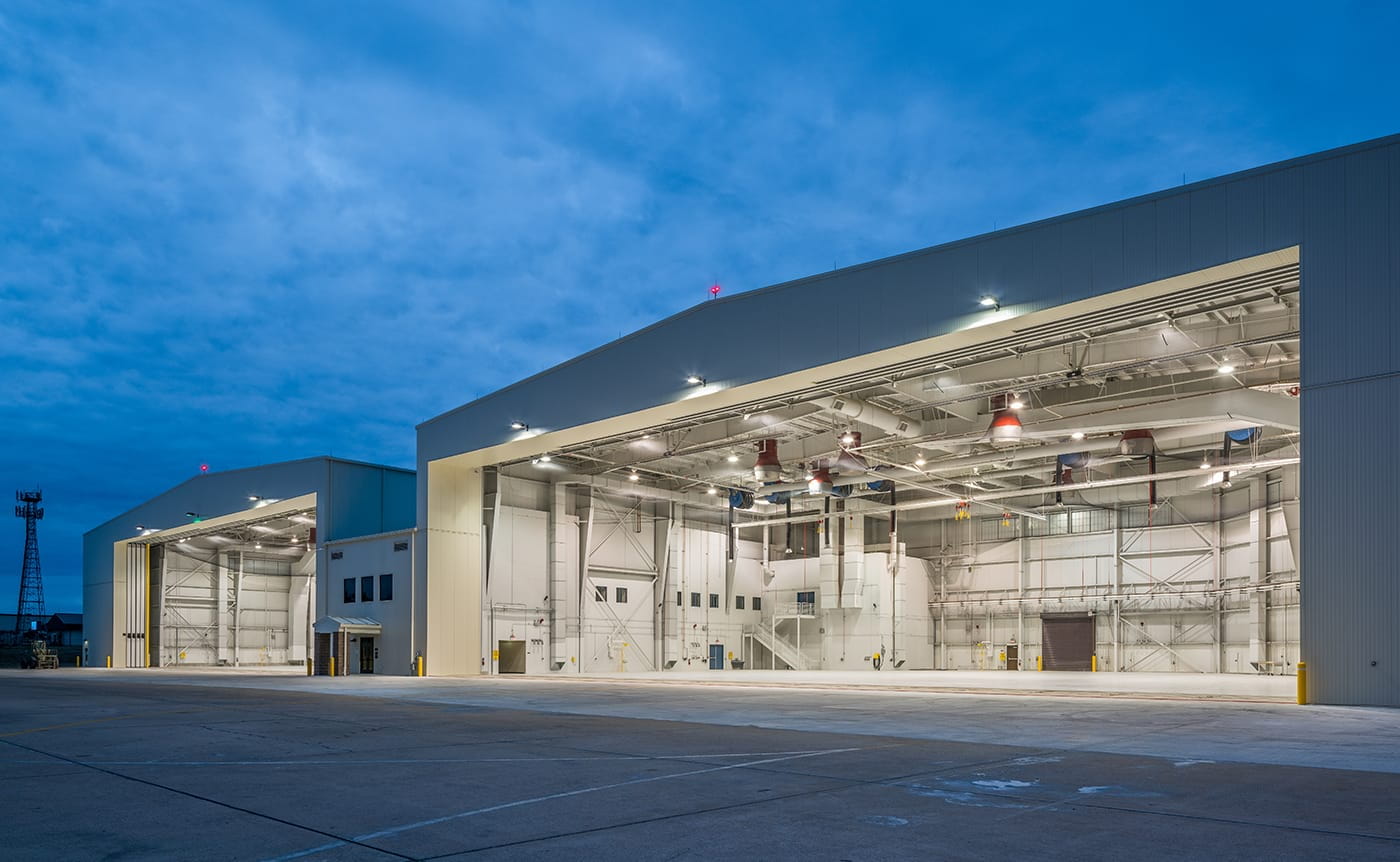Few projects involve more requirements and regulations than those with federal agencies. Between carefully controlled funding documents, environmental considerations and, often, more stringent security precautions, helping clients to navigate regulations is an important part of designing government facilities.
“If you don’t have that experience and familiarity with federal regulations or LEED standards and you try to learn it on the job, you’re in trouble—you won’t be able to properly focus on the client’s project,” FSB Federal Market Principal Gene Brown said. “That’s just something you have to know in advance. Our team is very detail-oriented, and we fully embrace the regulatory challenges.”
Government agencies typically require new facilities to be built to high standards of sustainability in accordance with Leadership in Energy and Environmental Design (LEED), a rating system to evaluate the environmental performance of a building and encourage sustainable design. Brown said the federal government began using LEED in an effort to demonstrate environmental stewardship without having to maintain their own independent rating system. The number of LEED points a facility receives determines its LEED rating level, either Certified, Silver, Gold and Platinum. It is a holistic rating system covering everything from energy efficiency to sustainable building materials. For example, a building might receive four LEED points under the water efficient landscaping credit and another point for encouraging building occupants to bike to work by offering bike storage and changing rooms with showers.
“When FSB plans to meet a certain LEED level for a federal client, we always ask ourselves what credits make the most sense for our client and the building’s environment,” Brown said. “The federal government’s budgets are often tight and scope is driven by mission, so we aren’t able to add cost to the project just in the name of sustainability alone. We work hard to be fiscally responsible by finding those sustainable solutions that are also life-cycle cost effective and support the federal government’s mission.”
Silver to Gold: Improvising additional sustainable features mid-project
Creative sustainable design abilities are indispensable when architects and engineers must amend building designs mid-project. This flexibility was required when the Navy’s sustainability standards changed from LEED Silver to LEED Gold during FSB’s design phase for a project in Coronado, California. Although the design was sixty percent complete, FSB was asked to augment the building’s plans to achieve the new LEED Gold standard and at the same the budget was cut approximately five percent.

Because of their expertise in federal regulations and LEED standards, FSB was able to improvise to provide additional sustainable features and maintain the project’s schedule. One part of this solution was to provide the absolute minimum parking capacity required for the current facility; by not paving additional areas the project team was able to both reduce construction cost and add two LEED points for reducing impermeable surfaces. In the end, FSB was able to successfully achieve the Gold rating and provide all mission-required scope while continuing to honor the original unique design aesthetic, which reflected the rich history of the Naval Air Station.
When the building opened in May 2014, it was equipped with solar panels to provide both renewable energy and heating of water. The building’s energy consumption was reduced through the use of a well-insulated building envelope, light-reflective roofing, energy efficient heating/cooling equipment and daylight harvesting to name a few. Water consumption was reduced through the use of low flow fixtures and water efficient landscaping; storm water was collected and treated on-site through permeable paving areas and landscaping features called bioswales.
For its creatively achieved sustainable design, the project received a 2015 Federal Energy and Water Management award.
When Department of Defense clients need defending
Brown said because of the firm’s decades of experience designing for federal clients, combined with their efforts to keep on top of rule changes and updates to code, FSB tends to know regulations as well as, or in some cases even better than the regulators. This knowledge was put to use in 2016 when the firm was submitting an Air Force hangar in Little Rock, Arkansas for LEED Silver certification.
To achieve Silver, FSB incorporated materials made with recycled content and locally sourced to reduce related carbon emissions. The designers required their construction teammates to reduce construction wastes possible by diverting as much as possible from landfills by recycling. For these and many other actions, the project would be able to achieve the required points toward its goal of Silver.

When the U.S. Green Building Council (USGBC) reviewed the design-related credits, it initially denied several energy points instrumental in achieving Silver certification. FSB appealed this decision on the grounds that the cited LEED criterion was developed based upon an office building and not that of a similarly functioning aircraft maintenance hangar. FSB then referenced and proposed the proper criterion which should have been considered as the basis during the review of the team’s energy analysis. The combination of diligent documentation and a deep understanding of the energy codes and rating system helped convince the USGBC to grant the Department of Defense’s project the energy credits it deserved which led to the hangar being able to achieve LEED Silver certification.
“I think the big secret is knowing the requirements and expectations better than the people who are charged with enforcing them,” Brown said. “And not only can FSB’s architects and engineers sustainably design in accordance with the intent of LEED—we can partner with our clients to help guide them through the numerous requirements, decisions and, when necessary, we can defend their projects.”
Interested in learning more about sustainable design and your next project contact:
Federal Market Principal, Gene Brown, PE, LEED AP BD+C at federal@fsb-ae.com or directly at 405.840.2931